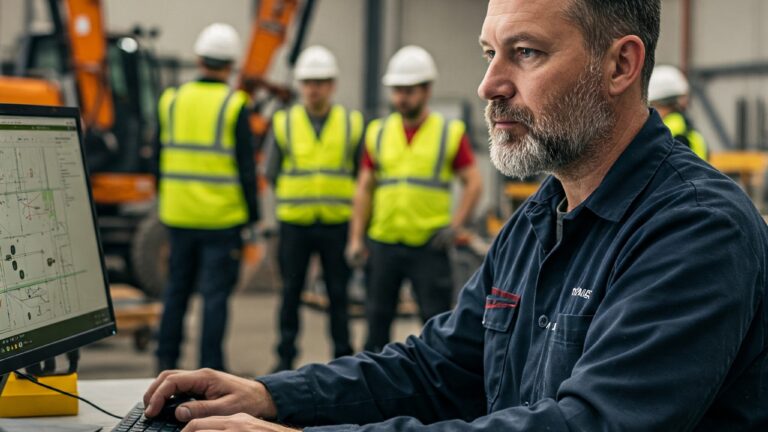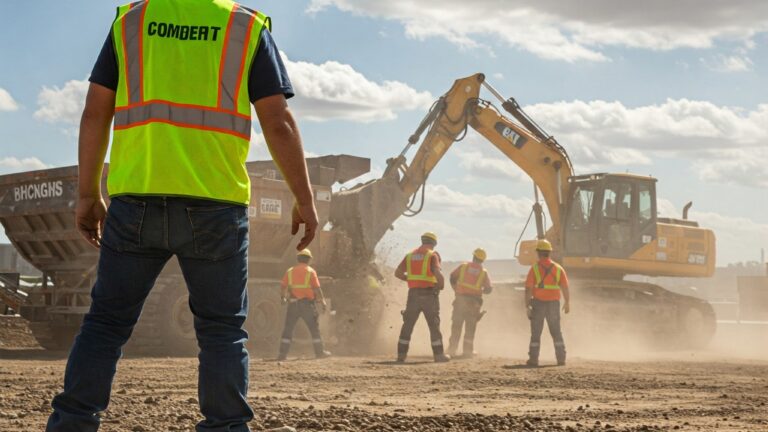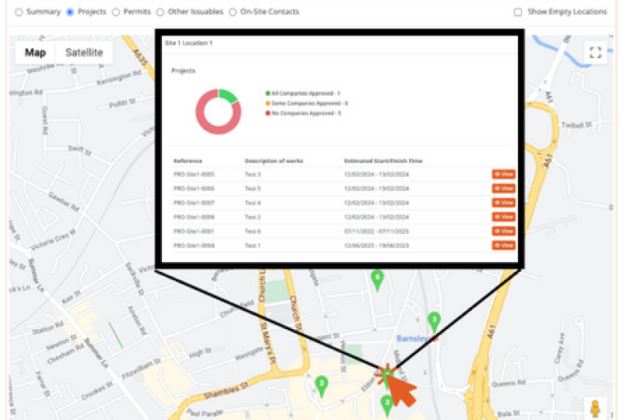- Why Heresafe?
- PricingWe don’t hide behind fancy sales teams before we tell you, our prices.
- Clients
See who we are working with and what they have to say about Heresafe.- Resources
Check out our blog, useful guides, whitepapers and product videos.- Prequalification and Induction Guide
- Contractor Compliance Guide
- Mini-Audit your Permit to Work System
- Health and Safety Audit Checklist
- Resource Library
- Blog
Book a demo
Navigating Contractor Compliance: Essential Steps for a Risk-Free Engagement
Hiring contractors can be a smart strategy for businesses seeking specialised skills, temporary assistance, or cost-effective solutions without the long-term commitment of hiring full-time employees.
However, engaging contractors comes with its own set of responsibilities, particularly in terms of compliance. Ensuring compliance with legal and regulatory requirements is crucial to avoid potential risks and liabilities. In this article, we will outline essential steps to navigate contractor compliance, ensuring a risk-free engagement for your business.
Contractor Compliance: Classification Clarity
The first step in ensuring contractor compliance is to accurately classify workers. Misclassifying employees as contractors can lead to legal trouble and financial penalties.
Generally, contractors are independent professionals who maintain control over their work methods, hours, and tools.
Employees, on the other hand, are subject to the company’s control and direction. Understand the legal definitions in your jurisdiction and consult legal experts if needed to ensure proper classification.
Clear Contractual Agreements
A well-drafted contract is the cornerstone of a compliant contractor engagement. Clearly outline the scope of work, deliverables, payment terms, and other essential details in the contract. Be specific about the contractor’s status as an independent entity, and avoid terms that could imply an employment relationship. Including clauses about confidentiality, intellectual property rights, and dispute resolution can also help mitigate potential issues.
Insurance Coverage
Contractors should carry their own insurance coverage, such as professional liability and workers’ compensation insurance. This helps protect both parties in case of accidents, errors, or other incidents during the engagement. Request proof of insurance from contractors and ensure it is valid for the duration of the project. Check out how to keep track of these important compliance documents.
Compliance with Labour Laws
While contractors have more autonomy than employees, they still must comply with labour laws and regulations.
Ensure that contractors are aware of any safety protocols, workplace rules, and legal requirements relevant to their work. Avoid exerting excessive control over contractors’ work processes to prevent blurring the line between contractor and employee status; but take care to understand your responsibilities and legal obligations to ensure you’ve completed due diligence checks on their competencies, RAMS and safety practices ahead of starting works, and to maintain a safe working environment for contractors and employees alike.
Regular Communication
Maintain open and clear communication with contractors throughout the engagement. Regular check-ins can help address any concerns, provide guidance, and ensure that the project is on track. Ensure communication channels are clearly communicated in your induction procedure.Establish a near miss reporting procedure and ensure contractors know how to report these..
Termination and Transition
Clearly outline the terms and conditions for terminating the contract in the initial agreement. If the engagement needs to end earlier than anticipated, follow the agreed-upon procedures and provide reasonable notice. Also, ensure a smooth transition of work or responsibilities to minimise disruptions.
Contactor Compliance: Conclusion
Contractor engagements offer businesses flexibility and access to specialised skills.
However, ensuring contractor compliance is crucial to avoid legal, financial, and reputational risks.
By accurately classifying workers, establishing clear contracts,, maintaining insurance coverage, and upholding labour and safety laws, you can navigate contractor compliance successfully.
Effective communication and proper termination procedures further contribute to a risk-free and beneficial engagement for both parties involved.
Always seek legal guidance when necessary to ensure full compliance with local regulations and laws.
For more information on Heresafe and contractor management, check out our website and book a demo today! Alternatively, email us now at hello@heresafe.com.Book a demoFind out if you’re ready with our Heresafe Onboarding Kit
Unsure if Heresafe is the right fit? We understand that choosing a new system can be challenging. That’s why we’ve developed our Onboarding Kit to simplify the decision-making process.
Check our package details
No matter which package you choose, you'll receive the best features tailored for you and your team, to achieve your automation and management goals. Find more details on the available packages.
Make it your own
You’ll get to see and choose your customisation options, and check out the available add-ons and extras so the system is exactly what you want and need.
Getting you started and seeing value
Keeping this guide with you, and working closely with us, we can walk you through onboarding so you can be completely up and running with your own Heresafe system.
It’s easy to get started.
Step 1
Book a demo of Heresafe with the team.
Step 2
We’ll chat through your requirements and see if Heresafe is right for you.
Step 3
We’ll send you demo access and our onboarding kit to help you decide what you need.
Step 4
You decide if we’re right for you. No pushy sales calls.
Step 5
Like what you see and hear? Let’s get you onboarded with Heresafe!
- Clients








